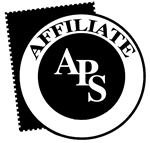Patent Medicines And Malaria Philately - Part 1
(Published: September, 2008, Volume 8, Number 3, Issue #26) (Table Of Contents)(Author: Mike Birrer)
 Early patent medicines included a wide variety of "cures" for ague, chills and fever, intermittent and
remittent fever - malaria by any name. Whether effective or not, many of these medications made
their producers wealthy while providing at least the hope of relief to consumers. Due to the
discovery of the true nature of malaria, the dominant curative (quinine), and federal laws requiring
truth in advertising, most claims of malaria cure were abandoned by 1908 unless the delivered
concoction contained an effective dose of quinine. As of this writing, over 600 producers of patent
medicines advertised for use against malarial fevers have been identified.
A number of producers doing business during the Civil War and the Spanish-American War are represented by private die proprietary stamps, which were affixed to
medicines' containers to pay the taxes levied on the products. The companies are
identified by text on containers, in almanacs, on trade cards, and in ads from various
sources. For firms using tax stamps, the stamps themselves provide philatelic links to
malaria.
Early patent medicines included a wide variety of "cures" for ague, chills and fever, intermittent and
remittent fever - malaria by any name. Whether effective or not, many of these medications made
their producers wealthy while providing at least the hope of relief to consumers. Due to the
discovery of the true nature of malaria, the dominant curative (quinine), and federal laws requiring
truth in advertising, most claims of malaria cure were abandoned by 1908 unless the delivered
concoction contained an effective dose of quinine. As of this writing, over 600 producers of patent
medicines advertised for use against malarial fevers have been identified.
A number of producers doing business during the Civil War and the Spanish-American War are represented by private die proprietary stamps, which were affixed to
medicines' containers to pay the taxes levied on the products. The companies are
identified by text on containers, in almanacs, on trade cards, and in ads from various
sources. For firms using tax stamps, the stamps themselves provide philatelic links to
malaria.
Dr. R. L. Herrick of Albany, New York, was the first to request permission to provide his own stamps, knowing the advertising power these could bring. Butler and Carpenter, printers of the government's revenue stamps, informed Herrick on October 15, 1862, that his would be the first private proprietary printed. As other companies followed suit, the government gave them a 5-10% discount since they had to pay for their own printing dies. The resulting issues are here listed as RS2//RS274.
 The tax was repealed on March 3, 1883.
The tax was repealed on March 3, 1883.
The 1862-1883 private die issues were printed on various types of paper as noted by the lower case letters in the listings:
- hard, brittle paper varying from thick to thin (first issue, 1862-1871)
- soft, porous silk paper with threads of silk - mostly red, blue, and black - not less than 1/4 inch long (second issue, 1871-1877)
- soft, porous paper in pale to deep shades of pink (third issue, 1877-1878)
- soft, porous paper showing a portion of the USIR watermark (fourth issue, 1878-1883)
The similar tax levied during the Spanish-American War generated additional private die revenue stamps, here listed as RS278//RS315. A few provisional issues, produced due to a shortage of stamps in July of 1898, also appeared. These include the Kilmer provisionals, RS307-RS315, and an unnumbered Antikamnia provisional.
Congress Repealed this tax on April 12, 1901.The 1898-1901 private die issues were printed with two separation types:
r rouletted 5 1/2 p phyphen-hole perforated 7.
There is a checklist (PDF) which is a listing of U. S. private die proprietary medicine tax stamps that connect with the malaria topic. Included are issues for companies that offered malaria, ague, or fever cures. Also noted with each listing is the type of documentation verifying that the company did indeed sell a product with the claim of malaria cure. Where "no source" is noted, this writer has read that the company produced a malaria remedy but has yet to see a validating advertisement. As always, readers are encouraged to share what they know about the subject.

